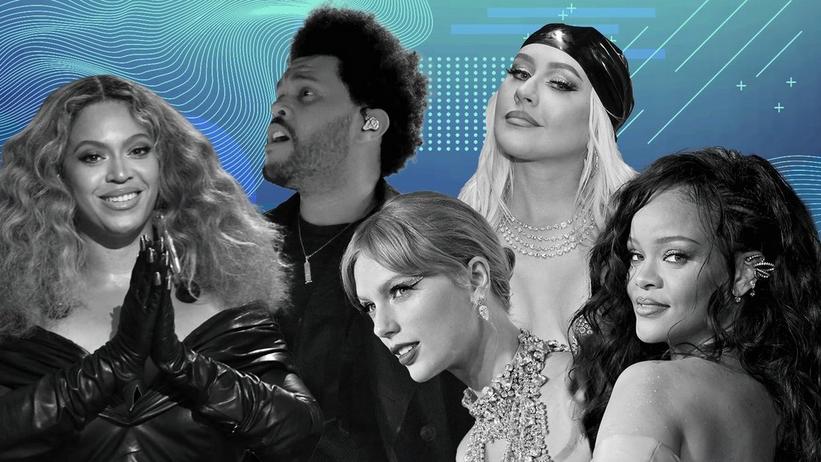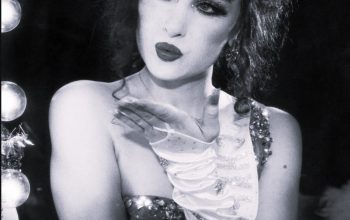Photo Credit: The Grammy
The joy of revisiting and comparing tunes from decades I wasn’t alive for to today’s popular music
Kaitlin Wilson, Associate Features Editor
There is no doubt that music has played an important role in entertainment over human history. Music changes and evolves as generations pass and society shifts. The most popular genres and songs from 50 years ago are quite different from the songs at the top of the Billboard 100 list today. Elton John, Spice Girls, and Wham! versus Drake, Coldplay and Beyoncé – which decade of music takes the cake? Although I think there are some sensational tracks topping charts today, I would argue that some of the best hits of all time come from the 1960s to 1990s. Music writing and production has significantly changed since the rise of social media and popularity of short form content – apps like TikTok and Instagram have completely changed how artists promote their music. So what changed? How has music evolved since the “Golden Age” of pop and rock?
You might be wondering, why is this university student who wasn’t even alive during any of the 20th century qualified to write this article? This is a great point, along with the fact that I am biased about music trending today. I prefer genres like indie, alternative, and R&B, while also listening to a lot of jazz and classical. For example, some of my most listened to artists are Tame Impala, The 1975, and Steve Lacy. But I like to consider, and listen to, a wide range of genres (I have to send my apologies to country listeners, I respect the genre, but it’s not for me) from different time periods. Also, in order to make this comparison simpler, I’m limiting my analysis to comparing music at the end of the 20th century to today’s current music style. If I were to consider the entire evolution of music, I would have no choice but to give the crown to Beethoven and his hit of the 1800’s, Moonlight Sonata, specifically the 3rd Movement (kidding… kind of).
Along with music genre evolution, the main methods of music publication have also changed drastically. If you really think about it, it is astounding how many artists, albums, and songs are at our fingertips on whatever music streaming service you use. I’m thankful for the convenience of the over 100 million readily available songs on Apple Music, and no longer having to worry about cassette tapes or CDs. With this being said, I am also a fan of appreciating the other ways music has been played and delivered. A few years ago, I invested in a vinyl turntable setup. It’s another way to own and proudly display my favorite records while directly supporting the artists. I am fully aware of the irony of owning a record player – I have every song under the sun just a few clicks away, yet I buy almost $40 vinyls which need to be kept clean, and the songs have to be played in order every time. But slowing down the process helps me to enjoy listening to music even more; plus, having physical albums just looks appealing.
I recognize that most will be disappointed to hear I am an unashamed and devout Apple Music user (angry Spotify users can direct all complaints to The Mike) and I would say that their “essential hits” playlists give a fine representation of each musical decade. I thoroughly enjoyed listening to each playlist and rediscovering songs that I recognize from my parents’ music, and classic rock songs that Canadian radio stations seem to play all the time in the summer (such as “Jack and Diane” by John Mellencamp).
Summarizing entire decades of musical development is very difficult to do without taking an entire page to write about every emerging genre and popular artist, so I’ve done my best to recap each music decade while highlighting the most popular musical contributions.
The beginning of the 1970s followed the breakup of the world’s most popular band at the time: The Beatles. The bar was set high, and the music scene shifted to highlight new genres and renew other popular styles. The hard rock genre started to strengthen with acts like KISS, Led Zeppelin, AC/DC, and Queen. Softer rock and pop music also became more popular with Jackson 5, Barry Manilow, Elton John, and Fleetwood Mac with the best selling album of the decade, Rumors. Disco music had its moment in the 70s, with hits like “Boogie Wonderland,” “Stayin’ Alive,” and “Y.M.C.A.” This decade was full of party hits! Groups like ABBA and the Bee Gees, along with songs like “Come and Get Your Love,” “I Want You Back,” and “Bohemian Rhapsody,” characterize this decade of music.
In the 1980s, music entered a new age of experimentation, as the popular genre shifted from rock, to pop and dance. A game changer for the music industry was the rise of the cable music video channel MTV, making music videos an essential aspect of promotion. Popular acts arose in the 80s such as Madonna, Whitney Houston and Prince. The “King of Pop,” Michael Jackson, broke records with his album Thriller being the best selling album of all time. Defining this decade are songs like Blondie’s “Call Me,” Bon Jovi’s “Livin on a Prayer,” and one of my favourites, Tears for Fears’ “Everybody Wants to Rule the World.” As a bonus, the 80s also produced the internet’s favourite trolling song, “Never Gonna Give You Up” by Rick Astley. Characterized by catchy synth melodies and bold guitar lines, the 1980s definitely takes the cake by being my favourite old school music decade.
Switching from walkmans and cassettes to CDs, the 1990s opened more opportunities for music to be played and shared. The birth of the internet and computer technology allowed for faster sharing of files, access to high quality recording equipment, and easier access to music in general. Hip-hop, rap, and pop were the dominating genres of the decade, with artists like Britney Spears, Mariah Carey, Tupac, and Dr. Dre topping charts. Alternative rock music was also still popular, with acts like Nirvana, Weezer, Blink-182, and Green Day as only a fraction of mainstream bands. If you’ve ever enjoyed classics like “Wonderwall,” “Wannabe,” “Livin La Vida Loca,” and “Smells Like Teen Spirit,” you’ve got a good idea of the wide range of popular music in the 90s.
Compared to music at the end of the 20th century, today’s music industry has been influenced by the widespread accessibility to music production technology and whether or not a song has the potential to go viral. Social media promotion is everything for modern day artists in a culture where fast paced content is preferred. Previously, musicians resorted to the radio, concerts, magazines, and record stores to hopefully gain popularity and sell albums. The songs had to be good quality, catchy, and well produced in order to draw attention. Today, many artists focus on the virality of a song, in hopes that it might catch wind on TikTok or Instagram and top the Billboard charts as a result. For example, Meghan Trainor’s recent hit “Made You Look,” was released and marketed all over the internet with a matching dance that helped bump it to the number 11 spot on the Billboard Hot 100. In my opinion, it wasn’t a great song, but the dance helped push it as a trend, which led to it being every other sound featured on my for you page for a long time. There are examples of extreme cases where artists will do anything for virality, even to the point of practically begging their fans to stream their music. I’m talking about Justin Bieber and the disaster that was his mediocre single “Yummy” released in 2020, where he desperately posted detailed instructions on “how to help ‘Yummy’ reach No.1.” He was faced with a lot of backlash for being so direct and demanding about needing the song to top charts and be successful.
Definitely not all charting songs today are over-marketed like the examples mentioned above, but I would argue that the production level of viral songs is less authentic than music written and produced in the 1960s to 1990s. Social media favours quick, simplistic, and catchy melodies that appeal to a wide range of audiences. In the end, these songs become saturated and overrepresented online until a new viral song takes over and the cycle repeats.
This being said, not all social media virality is innately negative. An artist I think deserves his insanely quick rise to popularity is JVKE and his single “golden hour.” JVKE gained his popularity on TikTok after a clip of the song went viral. As a heartfelt piano ballad with hip hop undertones, the clever lyricism and creative genre of the song earns its virality, and in January of this year, the song peaked at number ten on Billboard.
I am absolutely still a fan of lots of the creative and diverse music being made today, but at the same time, I think it is so rewarding to look back at the history of music trends and see what I can find. Styles of music, production, and promotion, along with the development of technology and the internet, has shaped the music and entertainment industry, leaving behind a diverse evolution of music as a result. I encourage you to try listening to more music from the 1960s to 1990s for yourself, and if you need more recommendations to start, I’ll leave you with more of my favourites and best suggestions below. Happy listening!
- “Head Over Heels” by Tears for Fears (fun fact: the music video for this song was filmed at Emmanuel Library at Victoria College!)
- “The Promise” by When in Rome
- “Everything She Wants” by Wham!
- “Don’t Forget Me (When I’m Gone)” by Glass Tigers
- “Ahead by a Century” by The Tragically Hip
- “Til I Am Myself Again” by Blue Rodeo
- “Dancing With Myself” by Billy Idol
- “More Than A Woman” by Bee Gees




